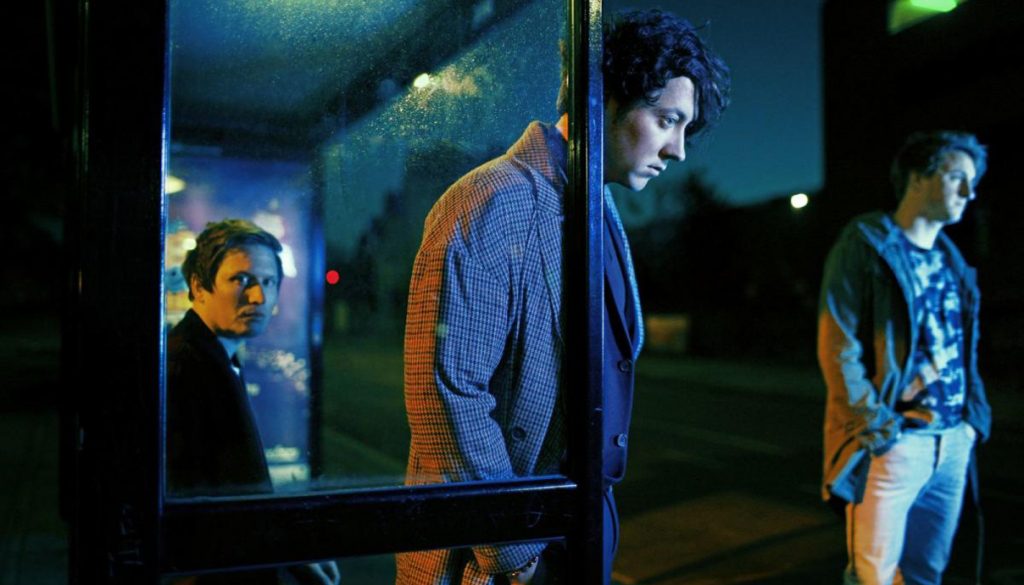INTERVIEW: The Wombats try, try again

The Wombats. Courtesy photo.
It took three albums and more than a decade for America to start noticing The Wombats, as bassist Tord Øverland Knudsen sees it. But that narrative is in line with the other effort the Liverpool rock trio has put in to attain success and seniority through persistence.
In 2003, the Norwegian-born Knudsen, singer-guitarist Matthew Murphy and drummer Dan Haggis met at the Liverpool Institute of Performing Arts. The following year, The Wombats started releasing a steady stream of EPs with catchy, humoristic indie rock jams that caught on with their fans but failed to attract attention from labels.
In a buzz-focused U.K. music industry where plenty of bands tear it all down and start afresh without immediate success, The Wombats were content to play it cool for three years while learning the ropes of gigging.
“It was a good starting point to get better to learn how to be a band, and a live band specifically,” said Knudsen, 34. “I think when we spent those years in uni, just being crap, basically. Being not very good, but getting better at writing, better at playing, better [at being] friends.”
Despite a lack of skill, the frenetic energy — with Knudsen throwing himself around stages, Haggis wailing away on his instrument and Murphy crisscrossing miles on performance surfaces — the trio never doubted they would eventually make it.
“We loved it as much as we do now,” he said.
It took four years for them to be signed, but they knew at the beginning that they were already accomplishing what they set out to do. The band has now sold more than one million albums — an impressive number for an indie rock band without a massive American following. Even more impressive with only three LPs to their name.
A debut, 2007’s A Guide to Love, Loss & Desperation, featured their best known single to date. “Let’s Dance to Joy Division” peaked at No. 11 on the U.K. albums chart. A three-date American promo tour followed.
Knudsen still remembers the band’s first time in San Francisco, which followed shows in New York and Los Angeles.
“We were supposed to do a show (at Popscene) and Murph lost his voice,” he said. “We had to cancel at the last minute. The next time we came back, we did the same show again. We did Rickshaw Stop a couple of times. [Aaron Axelson] has been supporting us since the very first album. That’s quite rare for America.”
An American self-titled EP followed in 2008, but it would take two more years until the release of a second full-length album, the band’s first that was widely available in the U.S.
This Modern Glitch retained the band’s new wave, alt-pop, rock and electronic influences, but began a course toward richer recordings. Comparatively, Knudsen describes the first as being busier, without room to breathe.
“We went to LA, worked with quite big producers that we learned so much from, in terms of recording techniques, and started using a lot more keyboards. The sound got a lot bigger.”
The band’s reputation continued to grow in the U.K. and in Europe, but besides the metropolises, the band remained a non-factor in America. That finally begin to change with 2015’s Glitterbug, Knudsen said.
“This album is the first one that seems to really connect with America,” he said. “More so than the rest of the world. America seems to be finally getting there, which is really exciting. In America, we feel like we’re a new band, because everyone is just discovering us.”
By the time the band began making Glitterbug, the three members were scattered around the world. After 13 years in Liverpool, Knudsen and his girlfriend moved to Oslo, Norway. Haggis found an apartment in London. And Murphy met and got engaged to a Los Angelino. She convinced him to move to sunny Southern California.
That relationship, and the one that preceded it for Murphy, heavily influenced the themes on Glitterbug, Knudsen said.
The lyrics are largely biographical and more serious in tone, rather than screwball like the debut.
“A lot of it was about that kind of transition,” he said. “But also the transition of moving to Los Angeles from London. He (was) getting more attached to L.A., and a lot of his stories were based on things that were going on in Los Angeles as well. Los Angeles as a city was very influential to the record.”
One such key transition song is the upbeat club anthem “Be Your Own Shadow,” which has more some violent lyrics but isn’t about viciousness so much as it is about going to great lengths to stay with a lover.
“Kiss me with your fist, it’s all right. Wrap your hands around my throat, I won’t mind,” Murphy sings.
Knudsen said the metaphorical distance between albums one and three is massive, from songwriting to musicality.
“As a live act, I think we got our shit together a lot more,” he said. “The first album was just three-piece super punk. We didn’t really know what we were doing. It was just a work in progress. On Glitterbug, we took from what we were, and mixed it with what we learned on our second album. I feel like we got to grip with who The Wombats are as a band. It felt like this is what we want to sound like; this is what we want to be.”
Follow Roman Gokhman at Twitter.com/RomiTheWriter.
